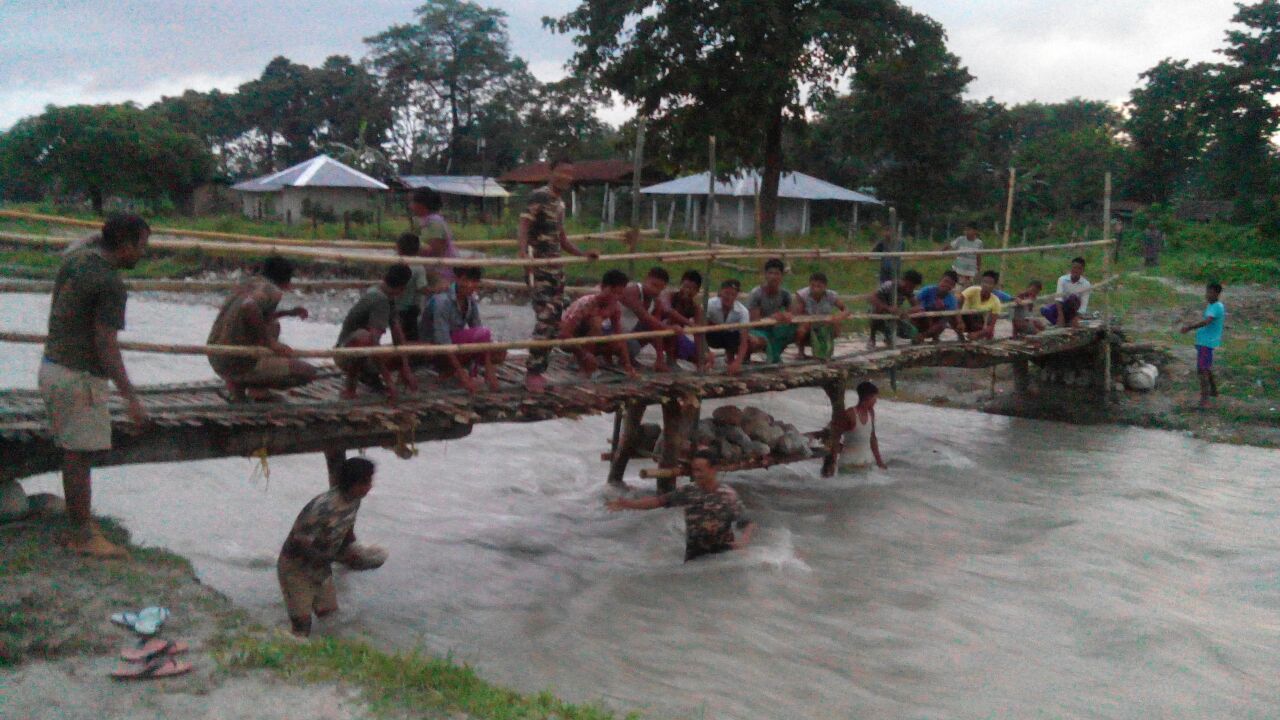Kurigram, June 22 — Kurigram’s Fulbari upazila, once gently connected by a humble bamboo bridge, now stands witness to a daily struggle as residents of eight villages wade chest-deep or swim across the Baromasia (Banidaha) River.
A month has passed since the collapse of the 220-foot-long bamboo bridge in Naodanga union-yet no meaningful initiative has been taken to restore this vital lifeline.
Upon visiting the Nabiu’s Ghat-also known as Amin Member’s Ghat-in Kishamat Shimulbari, the extent of the devastation becomes painfully clear.
The southern portion of the bridge, spanning some 50 to 60 feet, has crumbled entirely, severing a crucial route for thousands. While some villagers brave the waters on foot, others are left with no choice but to swim across the river, their belongings held tightly above their heads.
For the past ten years, the bamboo bridge-erected through local initiative as the river gradually narrowed-had served as the only means of passage for the people of Kishamat Shimulbari, Char Gorokmandol, Jhaukuti, Pashchim Fulmati, Naodanga and Hokbazar of Shimulbari union, along with Char Kharua and Kharua villages under Lalmonirhat Sadar’s Kulaghat union.
The origins of the crossing date back to post-independence days, when small boats ferried passengers between the riverbanks. Over the years, locals remember crossing through Karim’s, Nabiul’s and finally Amin Member’s ghat-leased points for boat services.
But the river’s temperament and shape have changed, and so too have the means of crossing it. The bridge, lovingly patched and rebuilt each monsoon season, finally succumbed last month to heavy currents and the weight of accumulated water hyacinths pressing against its base.
“This suffering-there are no words left to speak,” sighed Aher Ali of Kishamat Shimulbari and Nur Islam of Jhaukuti. “It’s been a month, yet no one has taken the initiative to fix it. We cross the river every day with bicycles on our shoulders. No one cares about our pain.”
Voices of hardship echo across the banks. “What more is there to say? You can see for yourself,” said Marjina Begum and Jahanara Begum as they trudged through the water, firewood bundled on their heads.
Bailey bridge breaks down under coal-laden truck in Pirojpur
“Every day, people come and take pictures, but no one does anything to ease our misery. The schools are closed now, but when they reopen, our children will suffer most. We demand the bridge be rebuilt before that happens,” she said.
Taslima Uddin of Char Kharua lamented the disruption to daily life. “Hundreds use this route to reach Balarhat Bazaar. Our children study at Naodanga School and Balarhat Adarsha School. This bridge was their path to education.”
Schoolchildren like Jewel Rana, Masud Rana, and Hasanur Rahman from Jhaukuti echoed this sentiment. “We’re swimming across for now, but once schools reopen, how will we carry our books and go to class? We are deeply worried.”
Even the river’s bounty is now a curse for some. Fish farmers Ataur Rahman Ratan and Mojibur Rahman Babu spoke of the immense trouble caused to their trade. “Our farms lie across the river. We cannot transport fish feed, nor can we sell the fish. Every trip means swimming the river again. This is unsustainable.”
Bridge of Frustration: Design woes stall Barguna’s Sonakata Canal Project for four years







